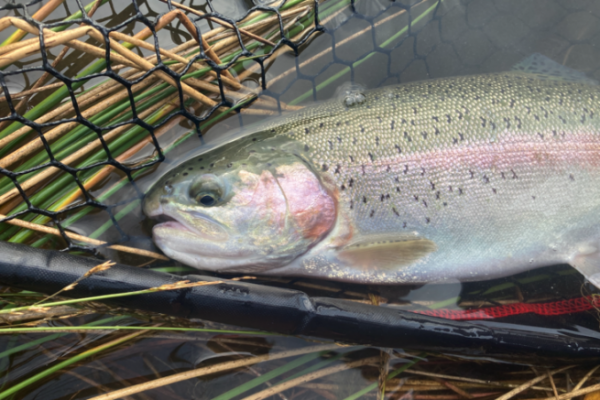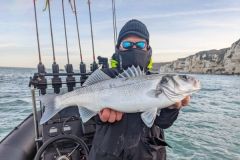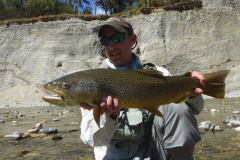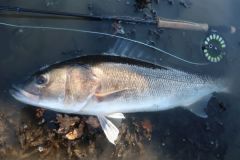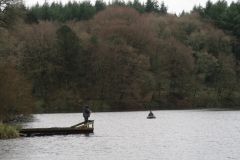Getting back on track and choosing a strategy
For reservoir fishing, it's always a good idea to have several rods set up to cope with different situations and fish moods.
Personally, I often mount between 4 and 5 rods, depending on the period and the reservoir in question. From floating line to deep-sinking line, the rods are first armed with flies that will cover most situations. Then, depending on conditions, you need to fine-tune your fishing and choice of strategy.
The Parc Ar Bihan reservoir in Morbihan is 1h15 from my home and I go there several times a season (autumn/winter). It's 1.7 hectares in size and has a shallow profile overall, with numerous areas of weedbeds, and a deeper section. All reservoir fishing techniques can be practised, from sight fishing to dry fishing, as well as streamer fishing and fishing closer to the bottom. This year, water levels are rather low and grass beds are present at the surface in many areas.
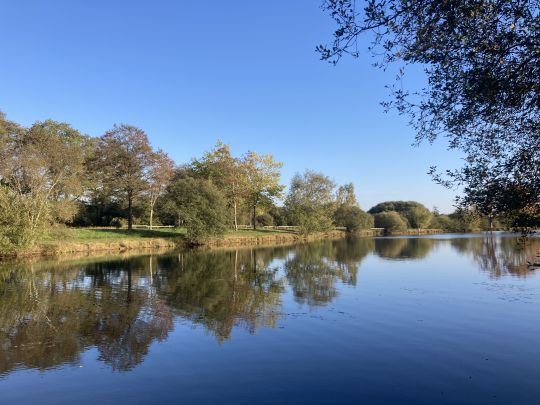
Surface fishing is often most effective at the very beginning of the season, when the water has not yet cooled too much and the trout are close to the surface, especially with freshly introduced fish.
In this context of "fresh" fish, it's often a good idea to start with aggressive fishing to trigger trout that don't yet know the music. A floating line, rigged with one or two brightly coloured streamers, and brought back by fast to very fast animations will quickly hit the first fish. In this case, pink and orange, as well as sparklers, are often the most attractive. Blobs are also very good in these conditions.
This will allow me to catch a few trout from the very first casts with some nice actions where the fish chase the fly at full speed creating a wave behind the fly!
It's fun for a while, but after a while, if there are too many captures, it gets a bit tiresome. It's time to change techniques and have a different kind of fun.
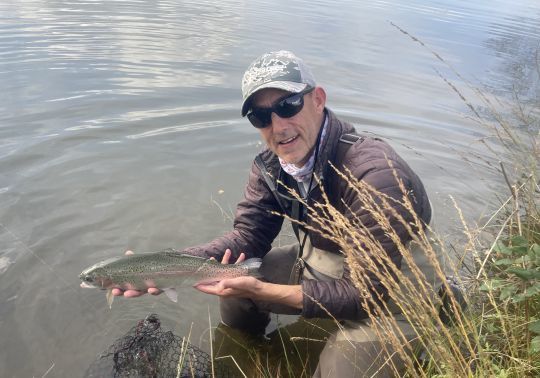
Dry fishing for pleasure!
The trout are milling around the lake. With the sun shining so brightly, it's easy to spot them. In this reservoir, as in others, the fish like to be in groups, large and small. The competition for food that they have experienced in their tank makes them aggressive, and if you manage to intercept their movements, or land delicately close to the shoal, it's not uncommon to catch several fish.
I'm mounting an imitation crested tipule or cousin, as it's in season even if they're not much in evidence on this day. A nice bite is always effective at the start of the season.
By casting into shallow areas above the weed beds, the trout come to take them well. Gobbling is either fast and violent, or very gentle. You need to adapt your casting accordingly. It's great to see them coming straight up on these flies. It's always such a pleasure. If the fly is not taken a few seconds after casting, small vibrations can be used to stimulate the trout.
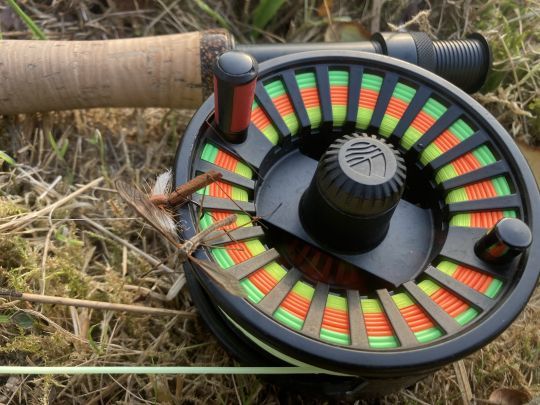
When they shun this fly or are more reluctant, an emerging chiro imitation is a very good option. This is the basis of fish feeding in lakes.
First of all, using a single floating fly, the trout will be very interested in my chiro emerger and shipman buzzer imitations. I'll make quite a few this way.
Then, when the swirls are less present and the activity calms down, a two-fly rig can be used to catch other fish, particularly on the light nymph, which will be on a stem a few centimetres below the surface.
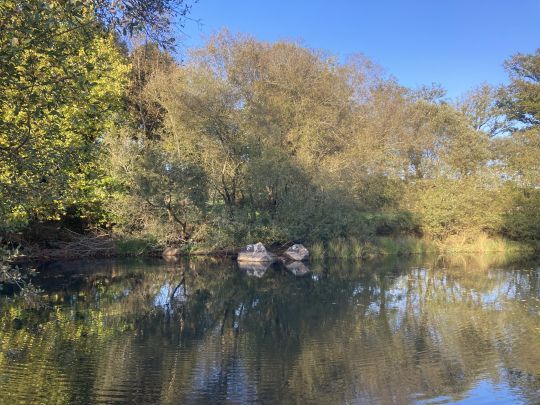
A lull and cormorants disturbing the trout!
After a quick lunch break, the trout seem less active. I'll catch some, alternating the morning's techniques. Fast fishing with a blob, and chiro fishing with two flies. Then it's dead calm, even with a change of spot.
I set up a plunge rod to fish closer to the bottom in the downstream area of the lake, to see that the trout haven't gone down a notch, as the cormorants are landing again and will come to disturb them. In fact, they swallow three of them right in front of me. A real nuisance, that bird!
No big results fishing this way, but if I cast very far, I'll catch two trout. Is it the technique close to the bottom, or the fact of casting in their "entrenchment" zone?
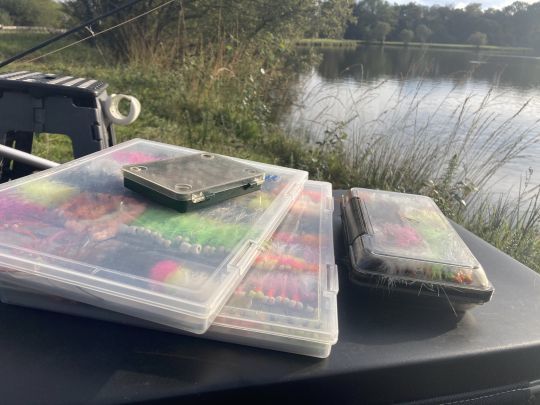
Then I want to wander around and try to find some trout on the banks. I see very few, but I do find an area in the upstream section where fish are "taking refuge". They're in very little water, as the lake is low due to the lack of rainfall, and I can attack them dry. I reel in my cousin's imitation, the famous "daddy long legs" in medium size, and fish a little on sight, but also on small eddies. I'll get several trout up in these conditions, and enjoy getting them up while the rest of the lake is still calm.
After a few dry fish, I decided to leave it at that for this outing. A good time with alternating activities and techniques.
The next outing will certainly be to the other Breton reservoir in the Côtes d'Armor at Saint Connan. A wilder 9-hectare lake where you can also fish from a boat.

 /
/ 